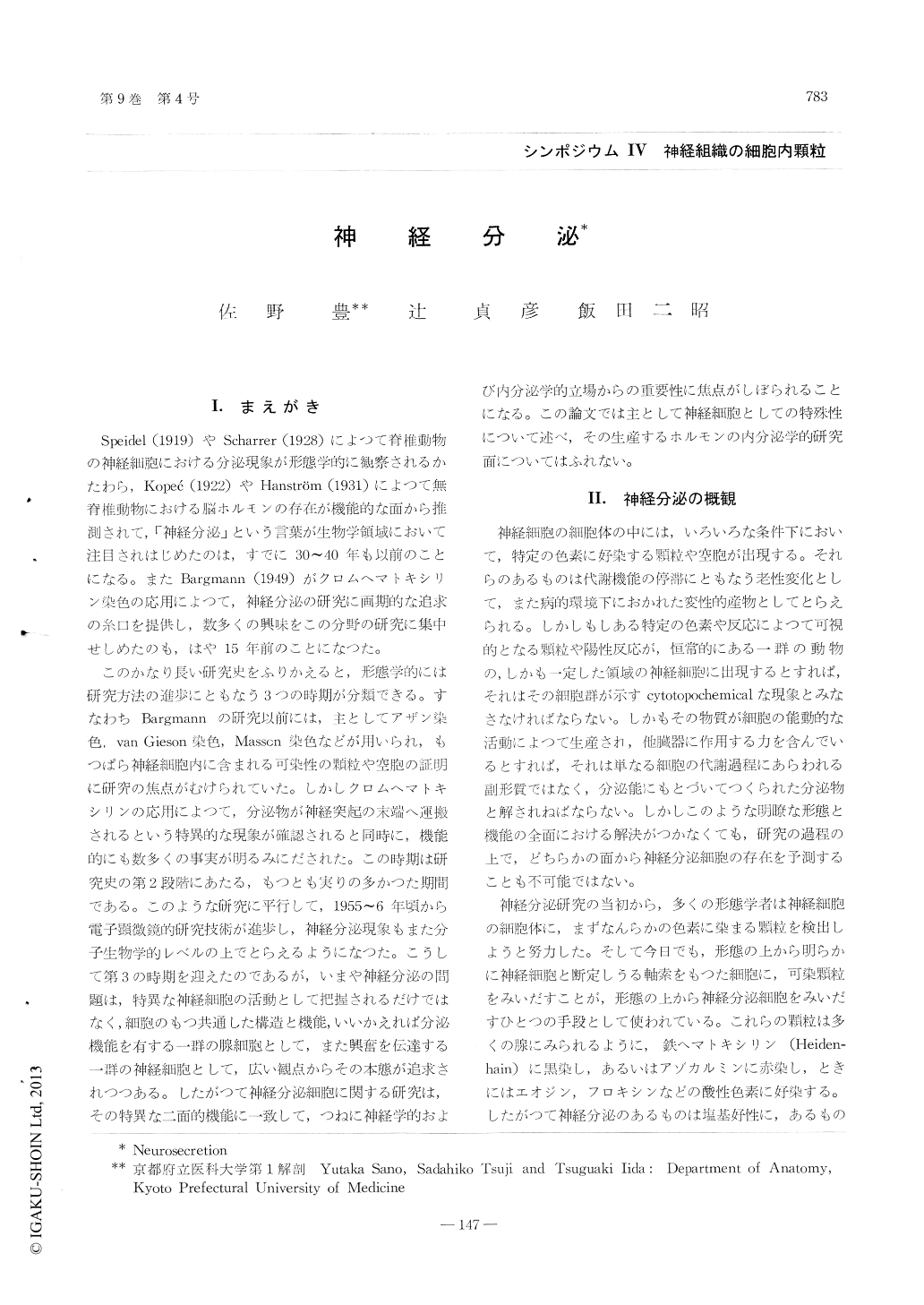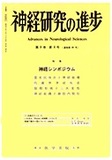Japanese
English
- 有料閲覧
- Abstract 文献概要
- 1ページ目 Look Inside
I.まえがき
Speidel(1919)やScharrer(1928)によつて脊椎動物の神経細胞における分泌現象が形態学的に観察されるかたわら,Kopeć(1922)やHanström(1931)によつて無脊椎動物におげる脳ホルモンの存在が機能的な面から推測されて,「神経分泌」という言葉が生物学領域において注目されはじめたのは,すでに30〜40年も以前のことになる。またBargmann(1949)がクロムヘマトキシリン染色の応用によつて,神経分泌の研究に画期的な追求の糸口を提供し,数多くの興味をこの分野の研究に集中せしめたのも,はや15年前のことになつた。
このかなり長い研究史をふりかえると,形態学的には研究方法の進歩にともなう3つの時期が分類できる。すなわちBargmannの研究以前には,主としてアザン染色,van Gieson染色,Masscn染色などが用いられ,もつばら神経細胞内に含まれる可染性の顆粒や空胞の証明に研究の焦点がむけられていた。しかしクロムヘマトキシリンの応用によつて,分泌物が神経突起の末端へ運搬されるという特異的な現象が確認されると同時に,機能的にも数多くの事実が明るみにだされた。
Neurosecretion may represent the extreme deve-lopment of the secretory potential of true neurons with axons and dendrites, Nissl substances and neurofibrils. The concept of the neurosecretory cell was formed primarily on the basis of light-microscopic observations, but this definition is con-sidered to be too restricted in the light of present investigations, especially of electron microscopic studies. According to accepted definition the neuro-secretory cell must mean morphologically demon-strable evidence of secretory activity. However, the light-microscopic evidence for secretion (staina-ble granules) should be considered to be sugges-tive, but not definitive, because some inclusions hitherto reported as neurosecretory material have been several kinds of cytoplasmic structures (for example; large mitochondria, lipofuscin, lipopro-tein droplets etc.).
The so-called elementary neurosecretory granules. (1,000-3,000 Å in diameter) are found in the perikaryon of all neurosecretory cells. These ele-ctron-dense particles are produced in the Golgi apparatus as seen in the other proteinsecreting cell. In the neurosecretory system the dense granules are transported proximo-distal as a consequence of axoplasmic flow and released from the axon termi-nal into the capillaries of the neurohemal organ. The majority of the neurosecretory fiber ends blindly making a special synapse (so-called nonsynaptic termination) and does not excite the other neuron or the innervate cell, but a part of the neurosecretory tract of the hypothalamo-hypophyseal system and of the pars intercerebralis-corpus cardiacum-system (insect) terminates between the epithelial cells of the adenohypophysis or corpora allata.
There are three kinds of granules in the neuro-secretory axon bulb; elementary granule, pale vesicle and small vesicle similar to the synaptic one. The intimate relationship between these granules was discussed.

Copyright © 1965, Igaku-Shoin Ltd. All rights reserved.


